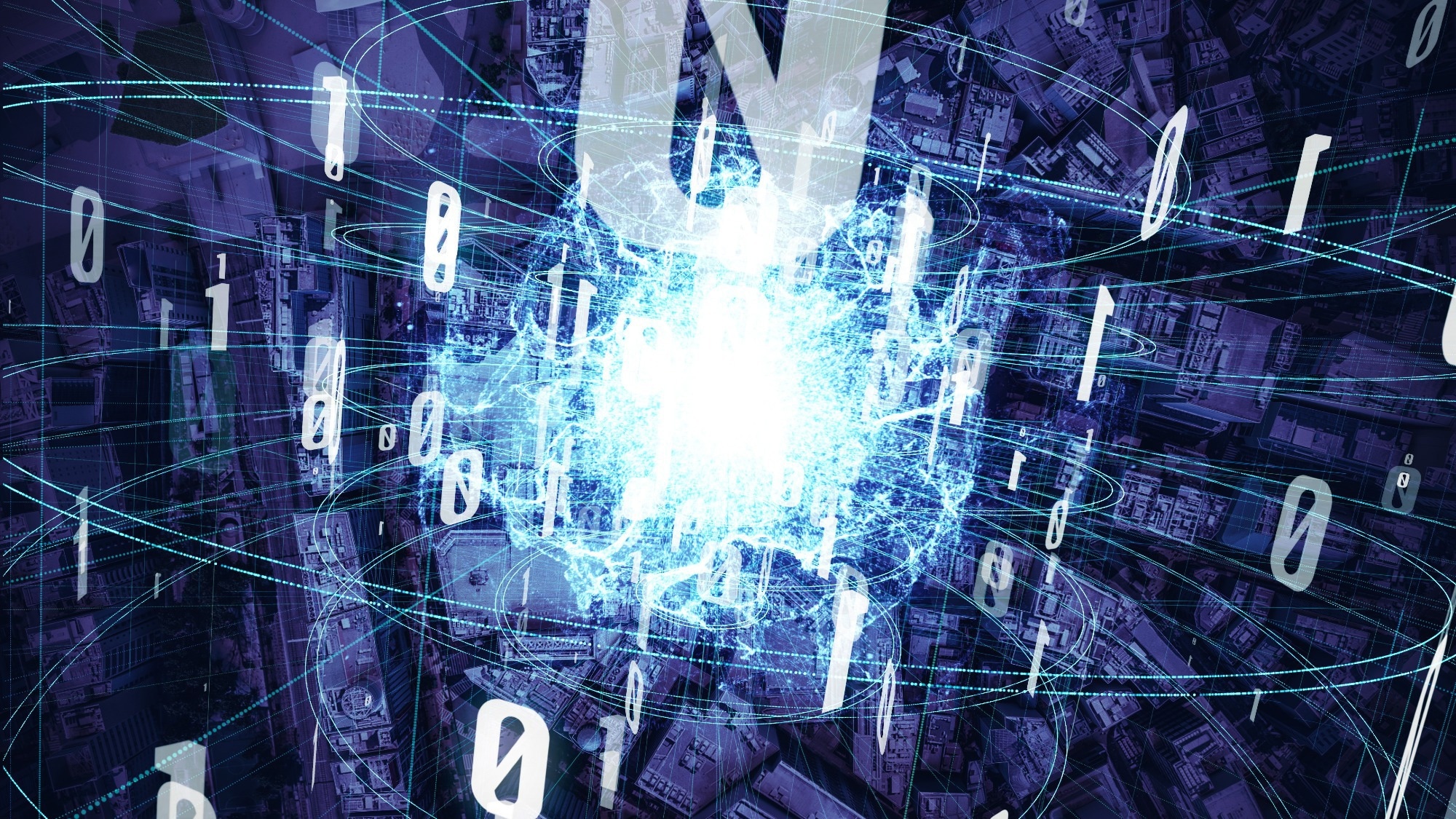 By Samudrapom DamReviewed by Susha Cheriyedath, M.Sc.Updated on Oct 22 2024
By Samudrapom DamReviewed by Susha Cheriyedath, M.Sc.Updated on Oct 22 2024Quantum cryptography is an advanced branch of cryptography based on quantum physics, offering unhackable data transmission between sender and receiver. This encryption technique has the potential to revolutionize network security.1,2

Image credits: metamorworks/Shutterstock.com
Introduction to Quantum Cryptography
Quantum cryptography uses photons and relies on quantum physics instead of mathematical algorithms to ensure privacy from eavesdroppers. Single photons are used to transmit digital information over a fiber optic cable, with each photon encoding either a 1 or 0.1,2
Classical cryptography involves algorithms like key exchange mechanisms and public-key encryption schemes for tasks such as private communication, authentication, and digital signatures. However, despite their ease of implementation, classical cryptographic methods have limitations in terms of security.3
Quantum cryptography addresses these limitations by distributing keys through single-photon transmission, making it extremely difficult for eavesdroppers to intercept without detection.4
Principles of Quantum Mechanics in Cryptography
Quantum cryptography relies on key principles of quantum mechanics: Heisenberg's uncertainty principle, the no-cloning theorem, quantum entanglement, and superposition.1,2,5,6
Heisenberg's Uncertainty Principle
Heisenberg's uncertainty principle states that knowing a particle's momentum and position with absolute certainty is impossible.2 In quantum cryptography, this principle is used to create secure communication channels as measuring a quantum state inherently disturbs it, which ensures the detection of eavesdropping attempts.2 In quantum entanglement, the state of two or multiple quantum particles is entangled when many of their physical properties are strongly correlated.5 Thus, an individual particle's state cannot be specified individually in such a phenomenon.
Quantum Entanglement
Quantum entanglement is critical for long-distance quantum key distribution as entangled states are the core of quantum cryptography.5
When quantum particles are entangled, their states are strongly correlated, meaning that changing one particle affects its entangled partner instantaneously.5 This property is used to create secure connections between sender and receiver, ensuring that no one else can intercept the entangled state.2
Superposition
In a superposition, a single qubit displays both 0 and 1 states based on probability. In the real world, the qubit is a superconducting particle kept at absolute zero temperature in an isolated environment free from decoherence.1 This isolated particle could be a photon or electron of elements displaying superconductivity, where the particle's spin decides the probability of 1's and 0's.1 In quantum cryptography, this property is harnessed to encode information in qubits, which can represent 1 and 0 simultaneously.2
No-Cloning Theorem
This principle states that an unknown quantum state cannot be cloned, making it impossible for eavesdroppers to create exact copies of transmitted quantum states.6 This effectively prevents wiretapping attacks.6
Quantum Key Distribution
The most prominent quantum cryptography technology is quantum key distribution (QKD), which is an encryption method that has already found use in high-value transactions.7
QKD encrypts the communication channels between users by distributing secure keys—random number sequences generated from photon polarization—without encrypting the data itself.7
These types of quantum cryptographic systems utilize more than one communication channel—the safer quantum communication channel, as well as the conventional classical channel. Both channels have a role to play in the encryption between communication points.7
The classical channel is used to verify if any hacking attempts occurred, while the quantum channel holds the actual data. Any attempt to hack into the classical channel results in imperfections in the signal, which helps in detecting hacking.7
Quantum Encryption: Pioneering Cybersecurity Advancements
Major Protocols in Quantum Cryptography
Two major QKD protocols in quantum cryptography are BB84 and E91.5
BB84 Protocol
Developed in 1984, BB84 was the first QKD protocol. It encodes information in orthogonal quantum states and can be categorized as a prepare-and-measure protocol, where one party prepares a quantum state and sends it to another party for measurement. Both parties then compare their preparation and measurement bases to create a shared secret key through post-processing. BB84 is fully robust when both parties use single qubits but becomes less secure if one party unknowingly sends multiple copies of a qubit.5
E91 Protocol
E91 is an entanglement-based protocol in which both parties receive entangled photons from a central source, prepared in one of four maximally entangled states. One party measures its received particle using a basis of 0°, 45°, or 90°, while the other party measures its particle using a basis of 45°, 90°, or 135°. Afterward, both parties compare their measurement bases publicly using a classical communication channel. The results are either perfectly correlated or anti-correlated when the same basis is used, helping identify any eavesdropping attempts. Additionally, the parties use the Bell test on different bases to detect the presence of a potential eavesdropper.5
Advantages of Quantum Cryptography
Quantum cryptography offers several key advantages that set it apart from traditional cryptographic methods. One of its most significant benefits is its theoretically unbreakable encryption, which is based on the principles of quantum physics rather than mathematical complexity. This means that quantum cryptography can provide security against both current and future computational attacks, making it a robust choice for safeguarding sensitive information.8,9
Another major advantage is the ability to detect eavesdropping. In QKD, any attempt to intercept or measure the quantum states used for communication disturbs the system in a detectable manner. This allows legitimate users to know if their communication has been compromised, thereby ensuring the integrity of their messages.
Quantum cryptography is also considered future-proof. Unlike traditional cryptographic methods that may become vulnerable to advancements in quantum computing, quantum cryptography remains secure even against these powerful new technologies. Additionally, with QKD, hacking can only occur in real-time during transmission; there is no risk of storing encrypted data for later decryption when more advanced computing capabilities become available.8,9
A further advantage lies in the impossibility of key copying. Due to the no-cloning theorem of quantum mechanics, quantum keys cannot be replicated or stored, which prevents many types of attacks that are feasible with classical keys. This characteristic makes quantum cryptography particularly suited for securing communications that require long-term confidentiality, as it effectively prevents retrospective decryption of stored encrypted data.
Finally, quantum cryptography offers information-theoretic security, meaning its security is based on fundamental physical laws rather than computational assumptions. This provides a higher level of assurance compared to traditional methods. While there are practical challenges in implementing quantum cryptography, its unique security properties make it a promising technology for ultra-secure communications in sensitive applications.
Challenges and Limitations
Quantum cryptography faces several challenges, including the need for specialized equipment, high infrastructure costs, increased insider threat risks, and a higher risk of denial-of-service attacks.
One key limitation is that QKD relies on the physical properties of quantum systems for security, which makes it fundamentally different from classical cryptography. Its security depends on unique physical layer communications, often requiring specialized equipment like free-space optical transmitters or dedicated fiber optic connections. These requirements can make QKD systems expensive and difficult to deploy on a large scale.10
Additionally, QKD networks frequently require trusted relays to transmit information over long distances, which introduces further costs for secure facilities and infrastructure. The need for trusted intermediaries can also pose security risks, as these relays could become potential points of attack.
The vulnerability of QKD systems also means they are susceptible to insider threats and denial-of-service attacks, where attackers could disrupt the quantum signals or block key distribution. Ensuring the validation and security of QKD remains an ongoing challenge, particularly as the technology matures and finds broader applications.10
Current Applications and Use Cases
QKD is currently being used across various sectors, including financial institutions, telecommunications, government and military, and healthcare. These industries are leveraging QKD to enhance the security of their communication channels, especially for high-value or sensitive transactions where traditional encryption may be vulnerable.8
For example, in the United States, Verizon successfully conducted a QKD trial in Washington, D.C., showcasing the potential of quantum encryption for securing data over fiber optic links. This trial represents a significant step toward incorporating quantum technologies into mainstream telecommunications infrastructure.11
Similarly, Hyundai Heavy Industries Co. has established a quantum cryptography communication system among global shipyards for the first time, aiming to secure its defense technology. This implementation underscores the growing interest in quantum cryptography for industrial and defense applications, where secure communication is critical.12
In addition to these early adopters, companies like Crypto Quantique and ID Quantique are actively working to address technological challenges in quantum cybersecurity. Crypto Quantique focuses on utilizing quantum cryptography to overcome current limitations in securing IoT devices, while ID Quantique continues to innovate in quantum encryption technologies to advance secure communications.
These real-world applications illustrate the growing interest in quantum cryptography as a practical solution for secure data transmission, with ongoing research and trials expected to further expand its reach and efficiency in the coming years
A Complete Guide to Quantum Technologies
Future Outlook and Conclusion
In summary, quantum cryptography offers a promising solution to the growing security challenges of the digital age. By leveraging principles of quantum mechanics such as superposition, entanglement, and the no-cloning theorem, it provides a highly secure and theoretically unbreakable method of communication. As technology advances, quantum cryptography is expected to play an increasingly significant role in safeguarding sensitive information and ensuring the integrity of communication networks.
Looking ahead, advancements in quantum hardware and the scaling of quantum networks will be crucial to unlocking the full potential of quantum cryptography. Researchers and technology developers are focusing on overcoming challenges such as infrastructure requirements, trusted relay points, and integration with existing communication systems to bring quantum cryptography to broader use.
As quantum technologies mature, the implementation of quantum cryptographic solutions is expected to expand into more industries beyond finance, healthcare, and defense. Potential future applications could include securing IoT networks, enabling secure voting systems, and providing a robust defense against emerging quantum computing threats. By addressing current limitations, quantum cryptography is anticipated to become a key technology for global cybersecurity.
What to Expect From the Future Quantum Cryptography Market
References and Further Reading
- Yati, M. (2020). Quantum Cryptography. DOI: 10.13140/RG.2.2.34447.61601, https://www.researchgate.net/publication/345675328_Quantum_Cryptography
- What is Quantum Cryptography, its Principles, and Significance? [Online] Available at https://www.bennett.edu.in/media-center/blog/what-is-quantum-cryptography-its-principles-and-significance/ (Accessed on 21 October 2024)
- Renner, R., Wolf, R. (2023). Quantum advantage in cryptography. AIAA Journal, 61(5), 1895-1910. DOI: 10.2514/1.J062267, https://arc.aiaa.org/doi/full/10.2514/1.J062267
- Ugwuishiwu, C. H., Orji, U. E., Ugwu, C. I., Asogwa, C. N. (2021). An Overview Of Quantum Cryptography and Shor’s Algorithm. International Journal of Advanced Trends in Computer Science and Engineering, 9(5). DOI: 10.30534/ijatcse/2020/82952020, https://www.researchgate.net/publication/353121752_An_overview_of_Quantum_Cryptography_and_Shor's_Algorithm
- Kumar, A., Garhwal, S. (2021). State-of-the-art survey of quantum cryptography. Archives of Computational Methods in Engineering, 28, 3831-3868. DOI: 10.1007/s11831-021-09561-2, https://link.springer.com/article/10.1007/s11831-021-09561-2
- Grasselli, F. (2021). Introducing Quantum Key Distribution. Quantum Cryptography: From Key Distribution to Conference Key Agreement, 35-54. DOI: 10.1007/978-3-030-64360-7_3, https://link.springer.com/chapter/10.1007/978-3-030-64360-7_3
- Tajima, A. et al. (2017). Quantum key distribution network for multiple applications. Quantum Science and Technology, 2(3), 034003. DOI: 10.1088/2058-9565/aa7154, https://iopscience.iop.org/article/10.1088/2058-9565/aa7154/meta
- Lovic, V. (2020). Quantum key distribution: Advantages, challenges and policy. DOI: 10.17863/CAM.58622, https://www.repository.cam.ac.uk/items/c6575e28-6c05-4d35-ae80-3e0a65735d08
- Quantum Cryptography [Online] Available at https://cs.stanford.edu/people/eroberts/courses/soco/projects/2004-05/cryptography/quantum.html (Accessed on 21 October 2024)
- Quantum Key Distribution (QKD) and Quantum Cryptography (QC) [Online] Available at https://www.nsa.gov/Cybersecurity/Quantum-Key-Distribution-QKD-and-Quantum-Cryptography-QC/ (Accessed on 21 October 2024)
- Verizon Trials Quantum Key Distribution for Encryption over Fiber Optic Links [Online] Available at https://techblog.comsoc.org/2020/09/04/verizon-trials-quantum-key-distribution-for-encryption-over-fiber-optic-links/ (Accessed on 21 October 2024)
- Hyundai Heavy Industries Introduces Industry’s First Quantum Cryptography Communication System Among Global Shipyards [Online] Available at https://www.insidequantumtechnology.com/news-archive/hyundai-heavy-industries-introduces-industrys-first-quantum-cryptography-communication-system-among-global-shipyards/ (Accessed on 21 October 2024)
Disclaimer: The views expressed here are those of the author expressed in their private capacity and do not necessarily represent the views of AZoM.com Limited T/A AZoNetwork the owner and operator of this website. This disclaimer forms part of the Terms and conditions of use of this website.